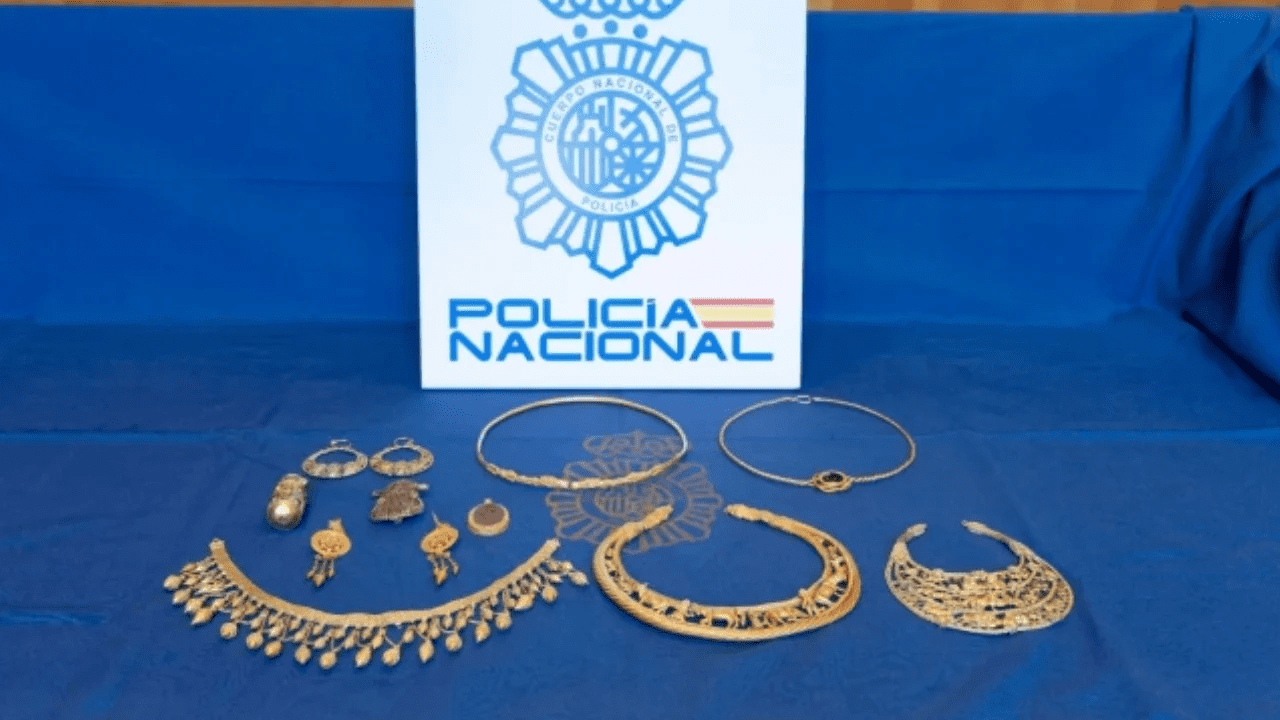Ancient gold jewelry was confiscated in Spain and will be returned to Ukraine- "Scythian gold", exported from Ukraine seven years ago! According to a complex scheme, through holding a fake exhibition and registrations of many false campaigns.
Approximately the amount of jewelry 60 millions of euros! A criminal group of five people was arrested!
This is a really great achievement in the fight against illegal trade in artifacts and money laundering.
Ukraine has a rich historical heritage, including Scythian gold, which is an important part of the country's cultural heritage. Scythian gold – these are artifacts and ornaments, which were created by the ancient Scythians, other Slavic peoples and their predecessors, who inhabited the territory of Ukraine and adjacent regions in ancient times.
These Scythian gold artifacts include a variety of gold ornaments, works of art, ornaments for religious purposes and other products, which testify to the high level of arts and crafts of ancient civilizations, that existed on the territory of Ukraine.
Many of these artifacts can be seen in museums of Ukraine, in particular, in the National Historical Museum of Ukraine and in other museums, located in different cities of the country. Scythian gold is an important part of Ukrainian cultural heritage and an important object for studying and preserving the history of this land.
The history of Scythian gold in Ukraine is very rich and dates back thousands of years. Scythians, ancient people, who lived on the territory of modern Ukraine, filmed and produced incredible gold products, known for their skill in processing gold.
Here are some key moments in the history of Scythian gold in Ukraine:
- The Scythians were ancient inhabitants of the northern Black Sea and neighboring regions during the 7th to 3rd centuries BC. They created incredible gold jewelry, works of art and other objects.
- Scythian gold was used in their religious rites and objects of worship. The Scythians believed in religious objects, such as “golden protome” – image of god, made of gold, as well as other religious artifacts.
- Scythian gold was often buried with the dead in Scythian barrows, which allowed modern archaeologists to discover a significant number of gold treasures and artifacts during excavations.
- Scythian gold became the object of interest of archaeologists, collectors and cultural institutions, and many gold artifacts were taken out of Ukraine to the collections of museums and private collections.
- In modern times, many Scythian gold artifacts are in museums of Ukraine and other countries of the world. The return and preservation of this valuable cultural heritage is an important task for Ukraine and international cultural organizations.
The history of Scythian gold in Ukraine testifies to the high level of art and crafts of this ancient people, and the importance of preserving and studying the country's cultural heritage.
The confiscation and return of these ornaments is the result of the joint efforts of law enforcement agencies of Ukraine and Spain in the fight against illegal trade and cultural theft. Usually, such cases require careful research and international cooperation. It also shows the importance of preserving and protecting cultural heritage and the importance of international cooperation to combat the illegal trade in artefacts.










